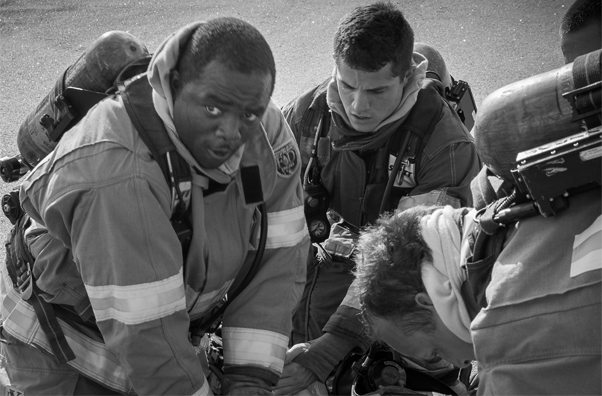
Wellness-Fitness Initiative
The International Association of Fire Fighters, in cooperation with the International Association of Fire Chiefs, committed to an unprecedented endeavor by collaborating with 10 of North America’s finest fire departments to build a stronger fire service by strengthening our foundation – the fire fighter.
A comprehensive wellness program that emphasizes physical, mental, and emotional well-being must be made available to recruits, active fire fighters, and retirees. The Fire Service Joint Labor Management Wellness-Fitness Initiative (WFI) has served as a guide for departments to engage in this pursuit for the past 25 years. Ultimately, any wellness-fitness program must be comprehensive, inclusive, accessible, and focused on behavioral change.
About the WFI
The original aims of the WFI include:
- Overcome the historic fire service punitive mentality of physical fitness and wellness issues
- Move beyond negative timed, task-based performance testing to progressive wellness improvement
- Require a commitment by labor and management to a positive individualized fitness/wellness program
- Develop a holistic wellness approach that includes medical, fitness, rehabilitation, and behavioral health
Fire fighters must continue to respond to emergency incidents that require extreme physical output and often result in challenging physiological and psychological outcomes. Such situations, over time, can and do affect the overall wellness of the fire fighting and emergency response system. Tomorrow’s fire service requires that we keep our fire fighters fit today. The ultimate goal of the Fire Service Joint Labor Management Wellness-Fitness Initiative is to improve the quality of life for all fire fighters.
The participating departments on the Task Force are: Austin, TX Local 975; Calgary, AB Local 255; Charlotte, NC Local 660; Fairfax, VA Local 2068; Indianapolis, IN Local 416; Los Angeles County, CA Local 1014; Metro Dade, FL Local 1403; New York City, NY Local 94 and Local 854; Phoenix, AZ Local 493, and Seattle, WA Local 27.
This system proves the value of investing wellness resources over time to maintain a fit, healthy, and capable fire fighter throughout his/her 25-30+ year career and beyond. An effective program should realize significant cost savings in lost work time, workers’ compensation, and disability.
The Mission
An overall wellness/fitness system must be developed to maintain fire fighters’ physical and mental capabilities and should be the objective of every fire department in cooperation with its local IAFF affiliate. While such a program may be mandatory, the agreement to initiate it must be mutual between the administration and its members represented by the local union. Any program of physical fitness must be positive and not punitive in design; require mandatory participation by all uniformed personnel in the department once implemented; allow for age, gender, and position in the department; allow for on-duty-time participation utilizing facilities provided or arranged by the department; provide for rehabilitation and support for those in need; contain training and education components; and be reasonable and equitable to all participants.
The program must address the following key points:
- Confidential behavioral, medical, and fitness evaluations
- Development of a physical fitness and wellness program that is educational and rehabilitative and not punitive
- Requires a commitment by labor and management to a positive individualized fitness/wellness program
- Development of a holistic wellness approach that includes: Fitness, Medical, Rehabilitation, and Behavioral health
Candidate Physical Ability Test
The Candidate Physical Ability Test (CPAT) was developed as a fair and valid evaluation tool to assist in selecting fire fighters and ensure that all fire fighter candidates possess the physical ability to complete critical tasks effectively and safely. The CPAT program covers every aspect of administering the CPAT, including recruiting and mentoring programs, providing recruits with fitness guidance to help prepare them for the CPAT, and setting up and administering the test. The entire validation process and the legal issues that departments might face when implementing the actual program are discussed in detail.
Fit To Thrive
We are leading an innovative charge to improve fire fighter health and wellness by launching the FIT TO THRIVE (F2T) program. Born as an extension of the IAFF/IAFC Peer Fitness Trainer (PFT) program, F2T is designed to support the WFI by helping more fire fighters be more active, more often so they can experience the benefits of regular exercise. It is comprehensive, inclusive, accessible, and focused on behavior change.
The IAFF/IAFC Task Force has determined that successfully implementing the Wellness-Fitness Initiative and the CPAT requires a fire fighter in each department who can take the lead. This individual must be able to design and implement fitness programs, improve the wellness and fitness of their department, and assist with the physical training of recruits. This need for a department-level leader led to the development of Fit To Thrive (F2T).